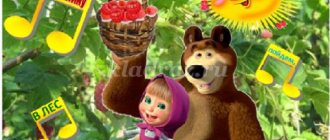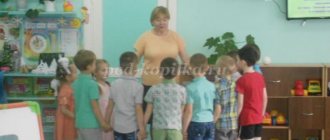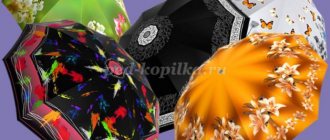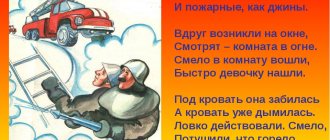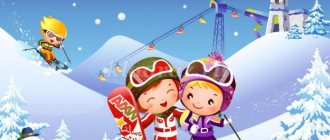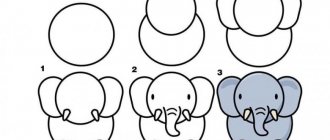Conversation as a method of communication in dialogical speech
CONTENT
1. Lead 3
2. Educational meaning of conversation 3
3. Types, topics and content of conversations in age groups 4
4. Structure of a general conversation 6
5. Techniques for activating children’s thinking and speech during a conversation 6
6. Conclusion 7
References 8
In the development of coherent speech, the concepts of “dialogical” and “monological” speech are centers. Dialogical speech is considered by scientists as the primary natural form of linguistic communication, which consists of the exchange of statements. They are characterized by such forms as question, answer, addition, explanation, dissemination, objection, speech etiquette formulas and constructive connections of remarks. In preschool age, the conversation is very fragmented, it is a dialogue in question-and-answer form, introducing the child to words, surrounding objects and phenomena. Gradually, the dialogues become more detailed, enriched by the stories of someone.
Conversation as a teaching method is a purposeful, pre-prepared conversation between a teacher and a group of children on a specific topic. Conversation is an active method of mental education. The question-and-answer nature of communication encourages the child to reproduce not random but the most significant, essential facts, to compare, reason, and generalize. In unity with mental activity in conversation, speech is formed: coherent logical statements, value judgments, figurative expressions. Such program requirements are reinforced as the ability to answer briefly and broadly, accurately following the content of the question, listen carefully to others, supplement and correct the answers of comrades, and ask questions yourself.
Conversation is an effective method of activating vocabulary, since the teacher encourages children to look for the most accurate, successful words to answer. It is desirable that the teacher’s speech reactions account for only 1/4 -1/3 of all statements, and the rest falls on the children.
Conversations also have educational value. The moral charge is carried by the correctly chosen content of the conversation: “What is our city famous for?”, “Why can’t you talk loudly on the bus?” The organizational form of the conversation also educates - children’s interest in each other increases, curiosity and sociability develop, as well as such qualities as endurance and tact.
Many topics of conversation provide an opportunity to influence the behavior of children and their actions. Conversation as a teaching method is practiced mainly in senior and preparatory groups. Topics of conversations are planned in accordance with the program. The methodological literature widely covers conversations of an everyday and social nature, as well as natural history “About kindergarten”, “About the work of adults”, “About birds”, etc. It is important that the topics of the conversations have a positive - emotional meaning. Three types of conversations can be distinguished.
1. An introductory conversation that organizes children for one or another type of activity.
2. Conversation accompanying the activities and observations of children.
3. Final conversation, clarifying and expanding the children’s experience.
Each of these conversations is unique in terms of purpose and method. This classification is based on the interaction between childhood experience and its expression in speech. In terms of content, we can roughly distinguish conversations of an educational nature (about school, about one’s hometown) and ethical ones (about the norms and rules of behavior of people in society and at home).
An introductory conversation, or a conversation that precedes the acquisition of new knowledge, is usually the connecting link between the experience children have and the one they will acquire. Its purpose is to identify disparate experiences and create interest in upcoming activities. Introductory conversations are successful if they are short, emotional, conducted in a relaxed atmosphere, do not go beyond the child’s experience, and a number of questions remain unresolved (“Let’s see... we’ll see... we’ll check...”).
The conversation that accompanies the acquisition of new experience is transitional from conversation to conversation. It is carried out in the process of children's activities, excursions, observations and unites children with common interests and collective statements. Its purpose is to stimulate and direct children’s attention to a richer and more expedient accumulation of experience. The teacher’s task is to provide the most complete perception, to help children gain clear, distinct ideas, and to supplement their knowledge. As a rule, the conversation is relaxed, children can move freely and move from one place to another. The teacher does not seek strict adherence to the rules of behavior and does not require additional answers from the children. He gives children the opportunity to observe, guides them unnoticed, without taking away the initiative; helps to understand phenomena, connections between cause and effect, and leads to a conclusion. The child is given the opportunity to observe and touch. Greater activity is provided for children, they can look at and act. They should not be pulled back, as they can get carried away. Flexibility, tact, and resourcefulness are needed. The conversation plan can be changed because it is adjusted along the way. In the process of initial observations, there is no opportunity for the development of a conversation and for the development of dialogical speech; it arises during repeated observations, based on existing ideas and knowledge.
The main conversation in kindergarten is the concluding conversation, which is usually called generalizing. The purpose of the general conversation is to systematize, clarify and expand the experience of children gained in the process of their activities, observations, and excursions. It should be noted that this type of conversation, to a greater extent than the previous two, contributes to the development of dialogic speech, primarily due to the question-answering form of communication.
In a conversation, such structural parts as the beginning of the conversation, the main part, and the end are quite clearly distinguished. The main part can be divided into stages. First, the most significant difficult material is identified. The main part of the conversation may have several logically complete parts. When preparing a conversation, the teacher identifies the essential components of the concept that will be analyzed with the children. Here is the structure of the main part of the conversation “About Health” in the senior group:
1. Fresh air.
2. Morning exercises.
3. Cleanliness of hands, understanding the skill of washing hands.
4. Hardening.
It is necessary to ensure that the emotional nature of the conversation is not only maintained throughout, but also increases towards the end. The end of the conversation is short in time, leading to a synthesis of the topic. This includes looking at handouts, doing game exercises, reading a literary text, and singing. The end of the conversation is a wish for the children to continue their work. As a rule, a whole range of teaching techniques is used in a conversation. One group of specific techniques ensures the functioning of children's thoughts and helps to build detailed judgments; the other makes it easier to find the exact word and remember it.
Conversation is a method of systematizing children's experiences; the leading technique is the question. It is the question that poses a mental and speech task; it is addressed to existing knowledge.
The leading role in the conversation is played by questions of a searching and problematic nature, requiring inferences about the connections between objects: Why? For what? Because of which? For what? Questions that stimulate generalization are also possible: “Which guys can we say are friends?” Lesser place is occupied by reproductive (statative) ones that are simpler in content.
A clear, specific question is pronounced slowly, with the help of logical emphasis, semantic accents are placed: how do people know where the tram stops? Children should be taught to accept the question the first time; sometimes children are offered a task consisting of two or three questions, or an answer plan. How should you wash your hands correctly? What should you do first, what should you do next, and why do they do this?
To solve other problems - expanding and clarifying the knowledge of preschoolers, activating memory and emotions - the following techniques are used - the teacher's explanation and story, reading works of art (proverbs, riddles, showing visual material) gaming techniques (verbal games, surprise moments, receiving a letter, etc. . P.).
Activation of each child during the conversation involves preliminary preparation of some children (individual conversation with the child, his parents, something to check, do), differentiation of questions and tasks in the conversation, the correct, leisurely pace of the conversation, the correct method of asking questions to a group of children. For active learning, special classes of a new type are conducted - games or “learning situations”. The problematic-search nature of these activities puts the child in front of the need to ask questions to the teacher and the children.
Mastery of all aspects of speech, in particular conversation - the development of language abilities is considered as the core of the full formation of the personality of a preschooler, which represents great opportunities for solving many problems of mental, aesthetic and moral education.
1. Ivanova O. N., Korotkova G. N. Speech development in children 5-7 years old in kindergarten: - Academy of Development; 2009, 192 pp.
2. Yanushko E. A. Speech development in early children. 1-3 years: - Mosaic-Synthesis; 2010, 64 pp.
3. Yashina V.I., Alekseeva M.M., Makarova V.N., Stavtseva E.A. Theory and methods of speech development in children: - Academy; 2009, 192 pp.
Structure of the lesson - conversation
Material according to MDK.03.02.
“Theory and Methods of Speech Development in Children” is intended for 4th year students
Part-time specialty training
Preschool education.
Teacher: Yushmanova E.G.
- Conversation is a method of developing dialogical speech.
- The meaning of conversation.
- Classification of conversations.
- Preparing for a conversation between the teacher and children.
- Structure of the conversation.
- Teaching techniques.
A conversation is a purposeful discussion of something, an organized, prepared dialogue on a pre-selected topic. Conversation is considered as a method of getting to know the environment and as a method of developing coherent speech.
Conversation is an active method of mental education. The question-and-answer nature of communication encourages the child to compare, reason, and generalize.
In conversation, together with thinking, speech develops: coherent logical statements, value judgments, figurative expressions. Dialogue and monologue speech is formed. Children learn evidence-based speech, the ability to justify their point of view, and enter into a “discussion.”
In the conversation, children’s vocabulary is activated, clarified and replenished, because The teacher encourages the children to look for the most accurate words for the answer.
Conversations also have educational value. Many topics of conversation influence the behavior of children, their actions (Why can’t we speak loudly on the bus? How can we please the kids?) Conversation helps to form a positive attitude towards people, the country, hometown, and loved ones.
Conversation is also important for aesthetic education. The child learns to listen carefully to the person who is speaking and to restrain the desire to answer a question without waiting for a call. Consequently, restraint, politeness and, in general, a culture of verbal communication are cultivated.
Classification of conversations.
Professor Evgenia Aleksandrovna Flerina classified the conversations based on didactic objectives:
1. An introductory conversation that precedes the acquisition of new knowledge is the connecting link between the experience children have and the one they will acquire. The goal is to find out what children know about this topic and to create interest in the upcoming activity. These conversations are successful if they are short, emotional, conducted in a relaxed atmosphere, a number of questions remain unresolved (“We’ll see... We’ll see... We’ll check...”).
2. Conversation accompanying the activities and observations of children (Conversation accompanying the acquisition of new experience). It is carried out in the process of children's activities, excursions, observations and unites children with common interests and collective statements. The goal is to stimulate and direct children's attention to a richer accumulation of experience. Children, observing, express their thoughts in the form of individual remarks and individual words. An exchange of views takes place. During the conversation, the teacher’s word plays an explanatory role, revealing the content of the material that children perceive.
3. Generalizing conversation. The goal is to systematize, clarify and expand the experience (knowledge) of children gained in the process of their activities, observations, and excursions. Generalizing conversation is a lesson held 1-2 times a month.
Other methodologists add conversations on works of art and conversations on paintings to these types.
In terms of content, we can roughly distinguish conversations of an educational nature (about school, about one’s hometown) and ethical ones (about the norms and rules of behavior of people in society and at home).
The teacher’s preparation for the conversation is as follows:
A) choosing the topic of conversation;
B) determination of program content and educational objectives;
C) drawing up a plan for the conversation (micro-topics);
D) selection of illustrative material.
Preparing children for a conversation consists of drawing the children’s attention a few days before the lesson to the objects and phenomena that will be discussed, naming them in words, letting them look at them, recognizing their signs, i.e. the factual material of the conversation should already be familiar to the children. The best preparation method is a preliminary conversation on the same or a similar topic, perhaps a tour, observation, or reading fiction. The preparatory work is indicated in the outline.
The content of the conversations is program material to familiarize children with the life around them: the life and work of people, events in public life, the activities of children in kindergarten (games, work, mutual assistance, friends).
The topics of the conversations are determined by the objectives of educational work with children, their age characteristics, the stock of knowledge acquired during excursions and observations, as well as their immediate environment. For example,
— natural history topics (introduced from the middle group):
Our park in spring. Wintering and migratory birds.
— topics reflecting phenomena of social life:
Moscow is the capital of our Motherland. Holidays (New Year, Maslenitsa, May 9, etc.)
- moral and ethical: (conducted from the senior group)
Conversation about friendship. Who can be called an honest person. Respect the work of your elders.
It is possible to systematize knowledge in a conversation provided that the material is arranged sequentially.
Structure of the lesson - conversation
I. Beginning of the conversation (introductory).
Goal: to attract children’s attention to the topic of conversation, to revive previously received impressions.
You can start a conversation with a memory, riddle, poem, showing a painting, photograph, object. A conversation about autumn can begin with the question: “Why is autumn called golden?” Conversation “On the culture of behavior” with the problematic question: “What kind of person can be said to be a cultured person?”
At the beginning of the conversation, it is advisable to formulate the topic (goal) of the upcoming conversation and justify its importance.
II. Main part.
In the main part of the conversation, during the analysis of phenomena, its content is revealed. To this end, children are consistently asked questions that activate their thinking and speech activity. The teacher gives explanations, confirms the children's answers, generalizes them, makes additions and amendments. Children are given new information in order to clarify or deepen knowledge about the essence of a phenomenon, about objects, etc. The success of the conversation is ensured by the emotionality of its conduct, the use of poetry, riddles, visual material, the participation and activity of all children in the group.
The main part is divided into micro-topics. Each micro-topic solves a particular problem. For example, the general goal of the conversation “About Health” in the senior group: to consolidate knowledge about those conditions that help maintain good health.
We highlight 4 microthemes:
1. Fresh air (indoors, while walking). Particular task: to clarify knowledge about the positive effects of fresh air on health.
2. Morning exercises, the need for a variety of exercises.
Particular task: to clarify knowledge about the positive effects of morning exercises on health, etc.
III. The end of the conversation is short in time.
Most often these are generalizing conclusions throughout the conversation. An ethical conversation can be completed by setting the following rule: “Polite people, when entering, are the first to greet everyone, bow their heads, and smile. Polite children will never forget to say hello first. Always remember this."
The conversation can be ended with a riddle, poem, proverb, music related to the topic of the conversation.
You can invite children to watch birds, hang a feeder for wintering birds, or draw a picture as a gift for their mother.
General conversation about winter for children 6-7 years old
Conversation about winter for children of the preparatory group
Author: Rita Shotaevna Chobanyan, teacher of the preparatory group of MADOU Central Regional Educational Institution No. 7 “Red Poppy” in Kurganinsk, Krasnodar Territory.
Description of the material: This conversation can help teachers concretize and deepen children’s ideas about winter. The summary of the conversation is designed for children in the preparatory group. Target . Summarize the idea of winter: the state of the weather, precipitation, natural phenomena, the state of plants, the characteristics of the life of domestic and wild animals. Learn to establish a connection between the characteristics of the appearance and behavior of animals in the winter season. Develop grammatically correct, coherent speech. Clarify and deepen knowledge about the seasons. Developmental environment: Ball.
Conversation about winter.
Guys!
Listen to the poem. It was written for you by the children's writer O. Fokina. Do you recognize winter? There is deep snow all around, Wherever I look, a blizzard is sweeping and swirling. Do you recognize winter? The rivers fell asleep under the ice, They froze motionless, The snowdrifts burned with silver. Do you recognize winter? We are racing down the mountain on skis, with the wind blowing at our backs. There is no more fun time than that! You will recognize winter. We will bring a thick spruce to our beloved holiday, We will hang beads on it. Do you recognize winter?
Guys! What time of year is the poet talking about in this poem? About winter. What signs of winter have you heard? Let's remember and name the winter months? (December, January, February) How has nature changed in winter? What's the weather like? The teacher conducts a general conversation about winter. Days in winter are even shorter than in autumn. The sun rarely peeks out from behind the clouds and warms weakly. Snowfalls day after day: snow flakes quickly fly from low dark clouds, covering everything around with a white veil. Snow covers the entire earth with a white blanket, lies on the branches of trees and bushes. The forest becomes silvery and festive. In winter there are frosty days. What happens to water in rivers, lakes, ponds?
Rivers, lakes and ponds are covered with thick ice.
Frost draws patterns on the glass. There are thaws. The snow darkens and settles. Icicles hang from the roofs. How do plants overwinter?
Trees and bushes stand without leaves.
Only spruce and pine trees have green needles. In winter, they do not eat, do not grow, and seem to fall into deep sleep. Why don't we see insects?
Insects sleep, hiding in the cracks of tree bark, under leaves in the ground.
How do people help birds?
i]What birds did you see?
There are few birds left; they are moving closer to people’s homes. People feed the birds. Migratory birds have flown to warmer climes. The animals in the forest are cold and hungry.
What do hare and squirrel eat in winter? Who does the fox hunt?
What do a bear and a badger do in winter?
Forest animals take refuge from the cold in hollows and burrows, or bury themselves in deep snow.
The bunny and the squirrel changed their fur coats. The squirrel feeds on reserves of nuts, acorns, and mushrooms. The fox mainly hunts mice at this time of year. The bear and the badger are sleeping in their dens; the hedgehog is also sleeping. How do pets winter?
People take care of pets.
Children, do you like winter? How?
What winter fun do you know?
(Sledding, skiing, and skating).
During the thaw days, the children build snow forts, sculpt snowmen and animals from the snow. And people clear snow in winter. Let's play the game “When does this happen?
I have a ball in my hands.
I call the seasons and give the ball to any of you. And you must name what happens at this time and pass the ball to someone else. The next child must add a new definition and pass the ball to the third. During the game, the teacher has a short conversation with the children about the seasons.
We recommend watching:
Sports festival for children of senior preschool age. Winter fun Creative improvisation based on winter fairy tales. Scenario for entertainment in the preparatory group Scenario for winter physical education entertainment for older preschoolers Scenario for winter entertainment for the preparatory group
Similar articles:
Day Thank you. Holiday scenario for children of the preparatory group
Summary of a general conversation on the topic: “Healthy teeth mean good health” with children of the senior group
Municipal budgetary preschool educational institution, kindergarten of general developmental type No. 108, Angarsk.
Summary of a general conversation on the topic: “Healthy teeth are good for health” with children of senior group No. 8.
Compiled by: Teacher of the 1st qualification category Olga Vasilievna Dmitrieva.
February 2012
Tasks:
Educational: Expand and improve children’s ideas about teeth: about their importance for human and animal life, about the growth of teeth at different periods of a person’s life, about what is useful and what is harmful for teeth. To consolidate children’s ideas about the rules of dental care, about the algorithm for brushing teeth in modern times and in ancient times, and children’s ideas about doctors who treat teeth.
Educational:
Develop the ability to solve intellectual problems by explaining and proving the correctness of your answer.
Educational:
Develop the ability to work collectively, agreeing and discussing a common answer with peers. Develop the ability to listen to your peers by singing ditties.
Integration of activities:
Cognitive - research, communicative, reading fiction, musical - artistic, gaming, motor.
Material, equipment: 1.
Pictures for the game
“Healthy - not healthy”
(you can’t eat a lot of sweets, you can’t crack nuts and seeds with your teeth, you can’t eat and drink very hot and very cold, you can’t put anything up your nose; it’s healthy to eat vegetables and fruits, healthy foods for teeth, brush teeth, visit the dentist, rinse your mouth after eating, give up sweets).
2.
Cards for the task “Growth of teeth from baby to old age” (the mouth and teeth of a baby, the mouth and teeth of a kindergarten graduate, the mouth and teeth of an adult who takes care of his teeth, the mouth and teeth of an adult who does not take care of his teeth , mouth and teeth of a person in old age).
3.
Pictures of animals with teeth - lion, crocodile, wolf, hare, shark;
The picture is a person's smile. 4
.
Teeth brushing algorithm cards. 5.
Pictures with objects that people used to brush their teeth in ancient times - ash, tree bark, resin, salt, chalk, dental elixir.
6.
Photos of doctors - dentist, ophthalmologist, pediatrician, ENT doctor.
Previous work:
Attached is a comprehensive thematic plan.
Individual work: Dasha P., Styopa M., Andrey B.
Progress of the general conversation:
I. _ Organizing time.
Children play in a group, an adult addresses them.
Educator:
“The guys gathered in a circle, I’m your friend and you’re my friend, let’s hold hands tightly and smile at each other.” (Children come up and stand in a circle).
Educator:
— Guys, last night at home, I was looking through children’s books and saw an interesting poem by S. Mikhalkov “Like our Lyuba...”. I really wanted to read it to you. Listen, please.
Reading of S. Mikhalkov’s poem “Like our Lyuba...”.
Like our Lyuba’s Mom feels sorry for the girl, Her teeth hurt: Rinsing in a cup warms, Weak, fragile - She doesn’t take her eyes off her daughter. Children's, dairy... Dad feels sorry for Lyubochka, The poor thing moans all day long, He glues a doll out of paper. He drives his girlfriends away: What to do with my daughter, - I have no time for you today! To relieve toothache.
II. Main part.
1. Educator:
— Why do you think Lyuba’s teeth hurt?
(Children's answers). Educator:
- Well done, you said it correctly. I invite you to sit down on the chairs.
Educator:
- Guys, tell me, why does a person need teeth?
Children:
— Teeth are needed to bite, chew and grind food. You need teeth to talk. A person without teeth is ugly. (Answers are accompanied by illustrations).
Educator:
- What do you think, only humans have teeth?
Children:
- Animals and fish have teeth.
Educator:
- Look at the pictures and find out where the human teeth are and where the animal teeth are. What animals did you recognize? (Children are offered pictures of animals - a hare, a wolf, a lion, a shark, a crocodile; a human smile).
Educator:
- Think and tell me, why do animals need teeth?
Children:
Animals need teeth to feed and defend themselves.
2.
Educator:
- Guys, when do a person’s first teeth appear?
Children:
— A person’s first teeth appear in the first year of life.
Educator:
-What are these teeth called?
Children:
- These are baby teeth.
Educator:
- Guys, what happens to baby teeth?
Children:
- Milk teeth are not permanent, at 6-7 years old they begin to fall out, and by 10 years all milk teeth are replaced with permanent ones. If a permanent tooth falls out, a new one will not grow in its place.
Educator:
— Raise your hand, who’s teeth have already started to fall out?
3.
Educator:
- Guys, the next 2 games, I suggest you play in subgroups: girls and boys.
Girls, go to the flannelgraph and look at the cards. They depict the teeth of a person of different ages from baby to old age. You need to look at them carefully and distribute them in the correct sequence, and then explain why you think that way. (Children are offered cards depicting the mouth and teeth of a baby, a kindergarten graduate, an adult who takes care of their teeth, an adult who does not take care of their teeth, a mouth and teeth in old age). And for the boys I offer the game “Useful - not useful.”
- Look, in one house there lives a healthy, cheerful tooth, and in the other there is a sick, sad tooth. Take each picture, look carefully and place it in the correct house. (Children lay out pictures and explain what is good and what is bad for teeth).
Educator:
- Well done, boys, you laid out the pictures correctly and explained what is useful and what is harmful for teeth. The girls also correctly distributed the pictures and told us about the growth of teeth from infancy to old age.
4.
The teacher invites the children to stand in a circle and do physical exercise.
Physical exercise.
We stomp - stomp - stomp with our feet. Movements are performed in accordance with the text. And with your hands clap - clap - clap. Turn your head - twist - twist. They knocked on the chest - chest. Heels top - top - top. On the knees slap - slap - slap. We candy am - am - am. And let's stroke the sides. And then the tummies, the mouths smiled. Children go to their chairs.
5.Teacher:
— Guys, what is the most important thing that you need to do for your teeth every day?
Children:
— Every day you need to brush your teeth.
Educator:
— How many times a day should you brush your teeth?
Children:
- Twice a day - morning and evening before bed and after meals.
Educator:
- Guys, how many times a day do we eat?
Children:
- Four times a day - breakfast, lunch, afternoon snack and dinner.
Educator:
— What should we do after eating when we can’t brush our teeth?
Children:
- After eating, be sure to rinse your mouth.
Educator:
— Tell me, what does every person need to have to take care of their teeth?
Children:
- Toothpaste, your own toothbrush and a glass for rinsing.
7.
Educator:
- That's right, guys.
Nowadays people brush their teeth with a toothbrush and toothpaste. But the ancient people did not have this, and they cleaned with different objects. Let's play the game "Arrange the pictures correctly and explain."
To do this we need to split into two teams. One team will lay out and tell the algorithm for brushing teeth with toothpaste and a brush, and the other team will lay out pictures and tell what people used when there was no toothbrush and toothpaste. Girls go to the table and choose an emblem for yourself, now boys take the emblem and go to the table with the same emblem. Take the pictures out of the envelopes, put them in the correct order, then choose one who will tell us the correct answer. Children lay out pictures on the tables, then comment on their answer to the task.
Educator:
Well done guys, you said everything correctly.
8. Educator:
- Guys, who helps us treat our teeth?
Children:
— A doctor helps us treat our teeth.
Educator:
— What is the name of the doctor who treats teeth?
Children:
- Dentist.
Educator:
— Look carefully at the photographs and tell me which of these doctors is a dentist? (One child comes to the board, shows the photo and explains his choice).
Educator:
— What are the names of the other doctors and what do they treat?
Children:
— This is an ENT doctor, he treats ears, nose and throat. This is an ophthalmologist, he treats eyes. This is a pediatrician, we turn to him when our temperature rises, cough, or runny nose appears.
9. Educator:
“And today we will end our conversation about teeth with a musical pause.” The guys prepared ditties for us about teeth. Listen carefully, if the advice in the ditty is good, clap your hands; if the advice is wrong, say: “No, no, no!”
Ditties:
1.
You need to eat constantly
4.
To give shine to your teeth, For your teeth, you need to take shoe polish! Fruits, vegetables, omelet Squeeze out half a tube of cottage cheese, yogurt. And brush your teeth. If my advice is good, is it the right advice? You clap your hands. No no no no!
2.
Don’t bite the cabbage leaf,
5.
Oh, awkward Lyudmila. It’s really, really tasteless, I dropped my brush on the floor. Better eat chocolate, picks up a brush from the floor, Waffles, sugar, marmalade. He continues to brush his teeth. Is this the right advice? Who will give the correct answer: No, no, no, no! Well done Luda? No!
3.
Lyuba told her mother:
6.
Always remember, “I won’t brush my teeth!” Dear friends: And now our Lyuba, without brushing her teeth, has a hole in every, every tooth. You can't go to sleep! What will be your answer: If my advice is good, Well done Lyuba? No! Clap your hands!
Educator:
“Aren’t you guys tired while you were singing along to the ditties?” Was your correct answer, what is useful and what is not!
III .
Final part.
Educator: -
Guys, what do you think, if the girl Lyuba from S. Mikhalkov’s poem knew and followed all the rules that we told you about today, would her teeth hurt?
Children:
- No.
Educator:
“I think this won’t happen to us, because we know and follow all the rules for caring for our teeth.”
